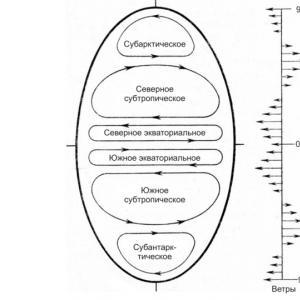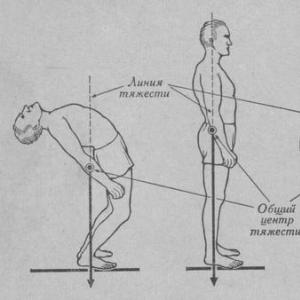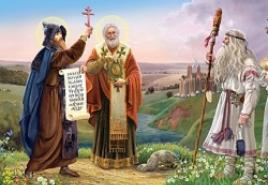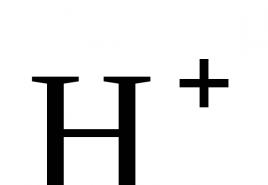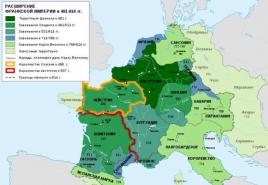How the alphabet appeared. First alphabets
The director of the Volgograd Institute of Art Education Nikolai Taranov has many titles: calligrapher, doctor of pedagogy, candidate of art history, professor, member of the Union of Artists of Russia. But few people know that he is still studying symbols. And, doing this, he went on the "detective trail" and made an amazing discovery.
Who invented the Slavic alphabet?
It would seem that everyone knows this: Cyril and Methodius, whom the Orthodox Church calls equal to the apostles for this merit. But what kind of alphabet did Kirill come up with - Cyrillic or Verb? (Methodius, it is known and proven, supported his brother in everything, but the “brain of the operation” and an educated person who knew many languages \u200b\u200bwas the monk Cyril). There is still debate about this in the scientific world. Some Slavic scholars say: “Cyrillic! It is named after its creator. " Others object: “Glagolitic! The first letter of this alphabet looks like a cross. Cyril is a monk. It's a sign". It is also argued that before the work of Cyril there was no written language in Russia. Professor Nikolai Taranov strongly disagrees with this.
The assertion that there was no written language in Russia before Cyril and Methodius is based on one single document - the "Legend of the Writings" of the monastic Khrabr found in Bulgaria, - says Nikolai Taranov. - There are 73 lists from this scroll, and in different copies, due to inaccuracies in translation or errors of scribes, completely different versions of the key phrase for us. In one version: "the Slavs before Cyril did not have books", in the other - "letters", but at the same time the author indicates: "they wrote with lines and cuts." It is interesting that Arab travelers who visited Russia in the VIII century, that is, even before Rurik and even more so before Cyril, described the funeral of one Russian prince: “After the funeral, his soldiers wrote something on a white tree (birch) in honor of the prince, and then, riding on horses, they departed. " And in the "Life of Cyril", known to the Russian Orthodox Church, we read: "In the city of Korsun, Cyril met a Rusyn (Russian), who had with him books written in Russian letters." Cyril (his mother was a Slav) got out some of his letters and with their help began to read the very books of the Rusyn. Moreover, these were not thin books. These were, as stated in the same "Life of Cyril", translated into Russian "Psalter" and "Gospel". There is a lot of evidence that Russia had its own alphabet long before Cyril. And Lomonosov said the same thing. He cited as evidence the testimony of Pope VIII, a contemporary of Cyril, in which it is stated that Cyril did not invent these letters, but rediscovered them.
The question arises: why did Kirill create the Russian alphabet, if it already existed? The fact is that the monk Cyril had a task from the Moravian prince - to create for the Slavs an alphabet suitable for translating church books. Which he did. And the letters with which church books are now written (and in a modified form - our today's printed works) are the work of Cyril, that is, the Cyrillic alphabet.
Was Glagolitic destroyed on purpose?
There are 22 points that prove that the Glagolitic alphabet was older than the Cyrillic alphabet, Taranov claims. There is such a concept among archaeologists and philologists - palimpsest. This is the name of an inscription made on top of another destroyed inscription, most often scraped out with a knife. In the Middle Ages, parchment made of the skin of a young lamb was quite expensive, and for the sake of economy, scribes often destroyed "unnecessary" records and documents, and wrote something new on the scraped sheet.
So: everywhere in Russian palimpsests the Glagolitic alphabet is erased, and on top of it there are Cyrillic inscriptions. There are no exceptions to this rule.
- In the world there are only five monuments written in Glagolitic. The rest were destroyed. Moreover, in my opinion, the records in Glagolitic were destroyed on purpose, - says Professor Nikolai Taranov.
- Because the Glagolitic alphabet was not suitable for writing church books. The numerical meaning of the letters (and then the belief in numerology was very strong) in it was different than what was required in Christianity.
Out of respect for the Glagolitic alphabet, Kirill left in his alphabet the same letter names as they were. And they are very, very difficult for an alphabet "born" in the 9th century, as it is claimed. Even then, all languages \u200b\u200bwere striving for simplification, letters in all alphabets of that time denote only sounds. And only in the Slavic alphabet are the names of the letters: "Good", "People", "Think", "Earth", etc. And all because the Glagolitic alphabet is very ancient. It has many signs of pictographic writing.
Pictographic writing is a type of writing, the signs of which (pictograms) indicate the object depicted by them. The latest finds by archaeologists support this version. So, tablets with Slavic writing were found, the age of which dates back to 5000 BC.
"The genius created the verb"
All modern alphabets in Europe are descended from the Phoenician alphabet. In it, the letter A, as we were told, denotes the head of a bull, which then turned over with its horns down.
- And the ancient Greek historian Diodorus Sicilian wrote: “These letters are called Phoenician, although it is more correct to call them Pelasgic, since they were used by the Pelasgians,” says Nikolai Taranov.
- Do you know who the Pelasgians are? These are the ancestors of the Slavs, the Proto-Slavic tribes. The Phoenicians stood out among the surrounding dark-skinned black-haired tribes of farmers, Egyptians and Sumerians with fair skin and red hair. Moreover, their passion for travel: they were excellent navigators.
In the 12th century BC, the Pelasgians just participated in the Great Migration of Nations, and their individual groups of desperate conquerors of new lands wandered very far. What gives the Volgograd professor a version: the Phoenicians were familiar with the Slavs and borrowed the alphabet from them. Otherwise, why did an alphabetic alphabet suddenly form next to Egyptian hieroglyphs and Sumerian cuneiform?
- They say: "The Glagolitic alphabet was too decorative, complicated, so it was gradually replaced by a more rational Cyrillic alphabet." But the Glagolitic alphabet is not so bad, - Professor Taranov is sure.
- I studied the earliest versions: the first letter of the Glagolitic alphabet does not mean a cross, but a person. That is why it is called "Az" - I. Man for himself is a starting point. And all the meanings of the letters in Glagolitic are through the prism of human perception. I painted the first letter of this alphabet on transparent film. Look, if you put it on other letters of the Glagolitic alphabet, you get a pictogram! I believe: not every designer will come up with this so that every grapheme falls into the grid. I am amazed at the artistic integrity of this alphabet. I think the unknown author of the Glagolitic alphabet was a genius! In no other alphabet in the world there is such a clear connection between the symbol and its digital and sacred meaning!
Glagolitic and numerology
Each sign in the Glagolitic alphabet has a sacred meaning and denotes a certain number.
Sign "Az" - person, number 1.
The sign "I know" is the number 2, the sign is similar to the eyes and nose: "I see, then I know."
The sign "Live" is the number 7, the life and reality of this world.
The sign "Zelo" is the number 8, the reality of a miracle and something supernatural: "too", "very" or "too much".
The sign "Good" is the number 5, the only number that gives birth to similar ones or a decade: "Good begets good."
The sign "People" - number 50, according to numerology - the world from where human souls come to us.
The sign "Our" - number 70, symbolizes the connection between the heavenly and the earthly, that is, our world, given to us in sensations.
Sign "Omega" - number 700, a kind of divine world, "Seventh Heaven".
The sign "Earth" - according to Taranov, means a picture: the Earth and the Moon in the same orbit.
It is probably very difficult to imagine your life without electricity. But before, people used to write and read by candlelight. But it's even more difficult to imagine your life without writing. Maybe someone will think that it would be great and not have to write dictations and essays. But in that case, there would be no books, no libraries, no SMS and even e-mail. In the language, as in the mirror, the whole world and the whole life of a person is reflected.
But man was not always able to. The art of writing has been developing for a long time, many millennia. But there is someone who is the creator of the alphabet, someone whom a person should thank for such an invaluable opportunity. Many, probably, have repeatedly wondered who created the alphabet of the Russian language.
Cyril and Methodius - creators of the Russian alphabet
Once upon a time there lived two Byzantine brothers - Cyril and Methodius. It was thanks to them that the Russian alphabet was created, and they became the first creators.
Methodius, the eldest son, who chose the military path, went to serve in one of the Slavic regions. His younger brother Cyril, as a child, was not indifferent to science, the teachers were amazed at his knowledge. At the age of 14, his parents sent him to Constantinople, where he managed to master a lot of knowledge in a short time: grammar, geometry, arithmetic, astronomy, medicine, Arabic, Greek, Hebrew, Slavic.
In 863, ambassadors from Moravia visited Constantinople. They arrived with a request to provide a preacher in their country to study the population of Christianity. The emperor decided that the brothers Cyril and Methodius should go to Moravia. Before setting off, Cyril asked the Moravians if they had the alphabet. The answer was negative. The Moravians did not have the alphabet. The brothers did not have much time. Cyril and Methodius worked hard from early morning until late at night. And so they managed to quickly create an alphabet for the Moravians, named after their younger brother - Cyrillic.
Thanks to the created Slavic alphabet, the brothers had no difficulty in translating the main liturgical books from Greek into Slavic. Now we know who first created the alphabet.
What happened next?After Methodius died in 885, the disciples and followers of the brothers began to continue the work. They defended services in the Slavic language. Somewhere around this time, the students created another Slavic alphabet. Today there is no certainty as to which alphabet was developed by Cyril, and which by his students and successors. There is an assumption that Cyril composed the verb, after which, based on it, he developed the Cyrillic alphabet, which was named after the first creator of the alphabet of the Russian language. Perhaps Kirill himself was engaged in the improvement of the primary alphabet, but all his students completed it.
Features:The Russian alphabet was created on the basis of the Cyrillic alphabet, which is a reworking of the Greek alphabet. The creators of the Russian alphabet took into account the phonetic features of the Old Slavonic language and them  19 letters were introduced into it, which were absent in the Greek letter.
19 letters were introduced into it, which were absent in the Greek letter.
The originality of the alphabet created by Cyril and Methodius was manifested in the fact that in order to designate one sound one had to use one letter.
As for the writing in Cyrillic letters, they were used only at the beginning of the paragraph. The big capital letter was painted beautifully, so the first line was called "red", that is, a beautiful line.
Thanks to the first creator of the alphabet of the Russian language, today people can also write. And if not for the brothers Cyril and Methodius, then we would not be able to do anything.
The importance of writing in the development of mankind can hardly be overestimated. Even in the era when the alphabet did not exist in sight, the ancient people tried to express their thoughts in the form of rock inscriptions.
The ABC of Elizabeth Boehm
First, they drew figures of animals and humans, then various signs and hieroglyphs. Over time, people managed to create easy-to-understand letters and put them into the alphabet. Who was the creator of the alphabet of the Russian language? To whom do we owe the opportunity to express ourselves freely through writing?
Who laid the foundation for the Russian alphabet?
The history of the emergence of the Russian alphabet goes back to the II millennium BC. Then the ancient Phoenicians invented consonants and used them for a long time to draw up documents.
In the 8th century BC, their discovery was borrowed by the ancient Greeks, who significantly improved the letter by adding vowels to it. In the future, it was the Greek alphabet, with the help of which the statutory (solemn) letters were drawn up, that formed the basis of the Russian alphabet.
Who created the Russian alphabet?
In the Bronze Age, Proto-Slavic peoples lived in Eastern Europe who spoke the same language.  Primer of Slavic letters of the Greatest Teacher B. Jerome of Stridonsky
Primer of Slavic letters of the Greatest Teacher B. Jerome of Stridonsky
Around the 1st century AD, they began to break up into separate tribes, as a result of which several states inhabited by Eastern Slavs were created in these territories. Among them was Great Moravia, which occupied the lands of modern Czech Republic, Hungary, Slovakia, partly Ukraine and Poland.
With the emergence of Christianity and the construction of churches, people had a need to create a written language that would make it possible to record church texts. To learn how to write, the Moravian prince Rostislav turned to the Byzantine emperor Michael III for help, and he sent Christian preachers Cyril and Methodius to Moravia. In 863, they invented the first Russian alphabet, which was named after one of the preachers - in Cyrillic.
Who are Cyril and Methodius?
Cyril and Methodius were brothers from Thessaloniki (now Greek Thessaloniki). In those days, in their hometown, in addition to Greek, they spoke the Slavic-Solun dialect, which formed the basis of the Church Slavonic language.
Initially, Cyril's name was Constantine, and he received his middle name just before his death, taking a monastic vow. In his youth, Constantine studied with the best Byzantine teachers of philosophy, rhetoric, dialectics, and later taught at the University of Magnavres in Constantinople.  Monument to Saints Cyril and Methodius in Saratov. Photo by Zimin Vasily.
Monument to Saints Cyril and Methodius in Saratov. Photo by Zimin Vasily.
In 863, going to Moravia, with the help of his brother Methodius, he created. Bulgaria became the center for the spread of Slavic writing. In 886, the Preslav Book School was opened on its territory, where they were engaged in translations from the Greek language and copied the Cyril and Methodius originals. At about the same time, the Cyrillic alphabet came to Serbia, and at the end of the 10th century it reached Kievan Rus.
Initially, the first Russian alphabet had 43 letters. Later, 4 more were added to it, and 14 of the previous ones were removed as unnecessary. At first, some of the letters in appearance resembled the Greek ones, but as a result of spelling reform in the 17th century, they were replaced with those that we know today.
By 1917, there were 35 letters in the Russian alphabet, although in fact there were 37 of them, since E and Y were not considered separate. Additionally, the alphabet contained the letters I, Ѣ (yat), Ѳ (fita) and Ѵ (izhitsa), which later disappeared from use.
When did the modern Russian alphabet appear?
In 1917-1918, a major spelling reform was carried out in Russia, thanks to which the modern alphabet appeared. It was initiated by the Ministry of Public Education under the Provisional Government. The reform began before the revolution, but was continued after the transfer of power to the Bolsheviks.  Wikimedia Commons / Jimmy Thomas ()
Wikimedia Commons / Jimmy Thomas ()
In December 1917, Russian statesman Anatoly Lunacharsky issued a decree according to which all organizations were ordered to use a new alphabet, consisting of 33 letters.
Although the spelling reform was prepared before the revolution and had no political background, it was initially criticized by opponents of Bolshevism. However, over time, the modern alphabet took root and is used to this day.

Such a sensational discovery was made by the Volgograd scientist Nikolai Taranov.
The author of the book "Runes of the Slavs and Glagolitz", Volgograd scientist Nikolai Taranov is sure: the first alphabet on Earth appeared with us.
Director of the Volgograd Institute of Art Education Taranov is the owner of many titles: Doctor of Pedagogy, Calligrapher, Professor, Candidate of Art History, member of the Union of Artists of Russia. And besides, he also studies symbols. In doing this, just like in the acclaimed novel by Dan Brown, our "Professor Robert Langdon" followed the trail of a medieval church conspiracy and an amazing discovery.
Was the Slavic alphabet invented long before Cyril?
Who invented the Slavic alphabet? Ask any student - he will answer: Cyril and Methodius. For this merit, the Orthodox Church calls the brothers of the monks Equal to the Apostles. But what kind of alphabet did Cyril come up with - Cyrillic or Glagolitic? (Methodius, it is known and proven, supported his brother in everything, but the "brain of the operation" and an educated person who knew many languages \u200b\u200bwas the monk Cyril). There is still debate about this in the scientific world. Some Slavic scholars say: “Cyrillic! It is named after its creator. " Others object: “Glagolitic! The first letter of this alphabet looks like a cross. Cyril is a monk. It's a sign". As an axiom it is argued that before the work of Cyril, there was no written language in Russia. Volgograd scientist Nikolai Taranov categorically disagrees with this.
- The assertion that there was no written language in Russia before Cyril and Methodius is based on one single document - the "Legend of the Writings" of the monastic Khrabr found in Bulgaria, - says Nikolai Taranov. - There are 73 lists from this scroll. At the same time, different copies due to translation errors or scribes' errors are completely different versions of the key phrase for us. In one version we find: "the Slavs before Cyril did not have books", in the other - "letters", but at the same time the author indicates: "they wrote with lines and cuts." It is interesting that Arab travelers who visited Russia in the VIII century, that is, even before Rurik and even more so before Cyril, described the funeral of one Russian prince: “After the funeral, his soldiers wrote something on a white tree (birch) in honor of the prince, and then, riding on horses, they departed. " And in the "Life of Cyril", known to the Russian Orthodox Church, we read: "In the city of Korsun, Kirill met a Rusyn (Russian), who had books with him written in Russian letters." Then Cyril, whose mother was a Slav, took out some of his letters from his bag and with their help began to read the very books of the Rusyn. Moreover, these were not thin books. These were, as stated in the same "Life of Cyril", translated into Russian "Psalter" and "Gospel". There is a lot of evidence that Russia had its own alphabet long before Cyril. And Lomonosov said the same thing. He cited as evidence the testimony of Pope VIII, a contemporary of Cyril, which states that Cyril did not invent these letters, but rediscovered them.
Then a legitimate question: why did Kirill create the Russian alphabet, if it already existed? Then, that the monk Cyril had a task from the Moravian prince - to create for the Slavs an alphabet suitable for the translation of church books. Which he did. The letters with which church books are now written, and in a modified form - all of our today's print media, textbooks and fiction, this is the work of Cyril, that is, "Cyrillic". 
WHY DESTROY THE VERBIT?
“There are 22 points that prove that the Glagolitic alphabet was older than the Cyrillic alphabet,” says Nikolai Taranov.
"Palimpsest" - there is such a concept among archaeologists and philologists. This is the name of an inscription made on top of another inscription scraped out with a knife or destroyed in another way. In the Middle Ages, parchment made of the skin of a young lamb was quite expensive, and for the sake of economy, scribes often destroyed "unnecessary" records and documents, and wrote something new on the scraped sheet. Everywhere in Russian palimpsests Glagolitic is erased, and above it there are inscriptions in Cyrillic. There are no exceptions to this rule.
- In the world there are only five monuments written by Glagolitsa. The rest were destroyed. Moreover, in my opinion, the records in Glagolitic were destroyed on purpose, - says Professor Nikolai Taranov. - Since the Glagolitic alphabet was not suitable for writing church books. The numerical meaning of the letters (and then the belief in numerology was very strong) in it was different than what was required in Christianity. Out of respect for the Glagolitic alphabet, Cyril left in his alphabet the same letter names as they were. And they are very, very difficult for the alphabet, "born" in the 9th century, as it is claimed. Even then, all languages \u200b\u200bwere striving for simplification, letters in all alphabets of that time denote only sounds. And only in the Slavic alphabet are the names of the letters: "Good", "People," Think "," Earth "and so on. And all because the Glagolitic alphabet is very ancient. It has many signs of pictographic writing.
For reference: pictographic writing is a type of writing, the signs of which (pictograms) denote the object they represent. The latest findings of archaeologists speak in favor of this version. So, tablets with Slavic writing (the so-called Tertiyskaya writing) were found, the age of which dates back to 5000 years BC.
This discovery about the antiquity of our original alphabet is of great importance for the entire Slavic world, - the Volgograd scientist Nikolai Taranov is sure. - So the professor of the Kiev Academy of Arts, calligrapher Vasily Chabanyk, after listening to my theory, became very interested and invited me to lecture in Kiev. After all, whatever you say, our peoples have the same alphabet and ancient history too. But, unfortunately, because of the current political events in Kiev, I cannot go there.
Professor Semchenko from the Minsk Academy of Arts is also very interested and supports this version. I spoke about this at two International Exhibitions of Calligraphy. And even foreign scientists, the French and the British, who, it would seem, are far from the history of the Slavic world and its written language, having listened to the lecture through an interpreter, came up to me and shook my hand. They said: "This is amazing, we have never heard this."
Probably, the world will still talk about the discovery of Professor Taranov. This version, about the antiquity of the Slavic alphabet, was also seriously interested in the chairman of the Russian Union of Calligraphers Pyotr Chibitko. And the other day Nikolai Taranov's open lecture about Glagolitic and Cyrillic, about the sacred meaning of the symbols of the oldest alphabet on Earth, appeared on Youtube.
VERBAL NUMEROLOGY
Each sign in Glagolitic has a sacred meaning and denotes a certain number.
The sign "Az" is a person, number 1.
The sign "I know" is the number 2, the sign is similar to the eyes and nose: "I see, then I know."
The sign "Live" is the number 7, the life and reality of this world.
The sign "Zelo" is the number 8, the reality of a miracle and something supernatural: "too", "very" or "too much".
The sign "Good" is the number 5, the only number that gives birth to similar ones or a decade: "Good begets good."
The sign "People" - number 50, according to numerology - the world from where human souls come to us.
The sign "Our" - number 70, symbolizes the connection between the heavenly and the earthly, ie. our world, given to us in sensations.
Sign "Omega" - number 700, a kind of divine world, "Seventh Heaven". At the same time, the Omega sign, the Volgograd scientist believes, resembles a star with prominences in an older style, and in a later, stylized one - a horseshoe. Since among the ancient Slavs, the star, now known as Omega, was called the Horseshoe and was considered a guide.
The sign "Earth" - according to Taranov, means a picture: the Earth and the Moon in the same orbit.
"Only a genius could create a Glagolitic"!
All modern alphabets in Europe are descended from the Phoenician alphabet. In it, the letter A, as we were told, denotes the head of a bull, which then turned over with its horns down.
- And the ancient Greek historian Photius of Sicily wrote: "These letters are called Phoenician, although it is more correct to call them Pelasgic, since they were used by the Pelasgians," Nikolai Taranov says. - Do you know who the Pelasgians are? These are the ancestors of the Slavs, the Proto-Slavic tribes. The Phoenicians stood out among the surrounding swarthy black-haired tribes of farmers, Egyptians and Sumerians, with fair skin and red hair. Moreover, their passion for travel: they were excellent navigators.
In the XII century BC, the Pelasgians participated in the Great Migration of Nations, and their separate groups of desperate conquerors of new lands wandered to the ends of the world. This allows the Volgograd professor to put forward a version: the Phoenicians were familiar with the Slavs and borrowed the alphabet from them. Why else, in the vicinity of Egyptian hieroglyphs and Sumerian cuneiform, suddenly formed an alphabetic alphabet?
They say that the Glagolitic alphabet was too decorative, complex, so it was gradually replaced by the more rational Cyrillic alphabet. I wrote down the epithets with which the Glagolitsa were “awarded”: “ugly”, “inconvenient”, etc. But the Glagolitic alphabet was not so bad at all, - Professor Taranov is sure. - I studied the earliest versions: the first letter of the Glagolitic alphabet does not mean a cross, but a person. That is why it is called “Az” - I. Each person is a starting point for himself. I would say: this is the most human alphabet on Earth. The entire meaning of the letters in Glagolitic is through the prism of human perception.
I painted the first letter of this alphabet on transparent film. Look, if you superimpose it on other Glagolitic letters, you get a pictogram! Not every designer thinks up so that every grapheme falls into the grid. As a specialist, I am telling you this. I am amazed at the artistic integrity of this alphabet. The unknown author of Glagolitic was a genius! There is no other alphabet in the world such a clear connection between the symbol and its digital and sacred meaning!
Hello dear guys! Greetings, dear adults! You are reading these lines, which means that someone once made sure that you and I could exchange information using writing.
Drawing rock carvings, trying to tell something, our ancestors many centuries ago could not have thought that very soon 33 letters of the Russian alphabet would fold into words, express our thoughts on paper, help read books written in Russian and allow them to leave their mark on history of folk culture.
And where did they come to us all from A to Z, who invented the Russian alphabet, and how did the letter come about? The information in this article may come in handy for research work in grade 2 or 3, so welcome to explore in detail!
Lesson plan:
What is the alphabet and how did it all start?
The word familiar to us from childhood came from Greece, and it is composed of two Greek letters - alpha and beta.

In general, the ancient Greeks left a huge mark on history, and it was not without them here. They went to great lengths to spread writing throughout Europe.
However, many scientists still argue who would be the first, and in what year it was. It is believed that the Phoenicians were the first to use consonants back in the 2nd millennium BC, and only then the Greeks borrowed the alphabet from them and added vowels there. This was already in the 8th century BC.
This Greek writing became the basis of the alphabet among many peoples, including us, the Slavs. And among the most ancient are the Chinese and Egyptian alphabets, which appeared from the transformation of rock paintings into hieroglyphs and graphic symbols.

But what about our Slavic alphabet? We don't write in Greek today! The thing is that Ancient Russia sought to strengthen economic and cultural ties with other countries, and this required a letter. Moreover, the first church books began to be brought to the Russian state, since Christianity came from Europe.
It was necessary to find a way to convey to all Russian Slavs what Orthodoxy is, to create their own alphabet, to translate church works into a readable language. The Cyrillic alphabet became such an alphabet, and it was created by brothers, popularly called "Solunskaya".
Who are the Solunsky brothers and what are they famous for?
These people are named so by no means because they have such a surname or name.

Two brothers Cyril and Methodius lived in a military family in a large Byzantine province with the capital in the city of Soluni, from this name of their small homeland and went the nickname.
The population in the city was mixed - half the Greeks and half the Slavs. And the brothers' parents were different by nationality: the mother was Greek, and the father was from Bulgaria. Therefore, both Cyril and Methodius knew two languages \u200b\u200bfrom childhood - Slavic and Greek.
It is interesting! In fact, the brothers' names on birth were different - Constantine and Michael, and they were named by church Cyril and Methodius later.
Both brothers excelled in their studies. Methodius mastered military techniques and was very fond of reading. Well, Cyril knew as many as 22 languages, was educated at the imperial court and was nicknamed a philosopher for his wisdom.
Therefore, it is not at all surprising that the choice fell on these two brothers, when the Moravian prince turned to the Byzantine ruler in 863 for help with a request to send wise men who could convey to the Slavic people the truth of the Christian faith and teach them to write.

And Cyril and Methodius set off on a long journey, moving for 40 months from one place to another, explaining in the Slavic language, which is well known to them from childhood, who Christ is and what his strength is. And for this it was necessary to translate all church books from Greek into Slavic, which is why the brothers began to develop a new alphabet.
Of course, already in those days, the Slavs in their lives used many Greek letters in counting and writing. But the knowledge they had had to be streamlined, brought to one system, so that it was simple and understandable for everyone. And already on May 24, 863, in the Bulgarian capital of Pliska, Cyril and Methodius announced the creation of a Slavic alphabet called Cyrillic, which became the progenitor of our modern Russian alphabet.
It is interesting! Historians discovered the fact that even before the Moravian commission, while in Byzantium, the brothers Cyril and Methodius invented an alphabet for the Slavs based on Greek writing, and it was called the Glagolitic. Perhaps this is why the Cyrillic alphabet appeared so quickly and simply, since there were already working notes?
Transformations of the Russian alphabet
The Slavic alphabet created by Cyril and Methodius consisted of 43 letters.

They appeared by adding 19 newly invented characters to the Greek alphabet (which had 24 letters). After the appearance of the Cyrillic alphabet in Bulgaria, the center of Slavic writing, the first book school appeared, and they began to actively translate liturgical books.
In any old book
“Izhitsa lived in the world,
And with her the letter Yat "
Gradually, the Old Church Slavonic alphabet came to Serbia, and in Ancient Russia it appeared at the end of the 10th century, when the Russian people adopted Christianity. It was then that the whole long process of creating and improving the Russian alphabet, which we use today, begins. That's what was interesting.

It is interesting! The godmother of the letter "E" was Princess Ekaterina Dashkova, who proposed to introduce her into the alphabet in 1783. The idea of \u200b\u200bthe princess was supported by the writer Karmazin, and with their light hand the letter appeared in the alphabet, taking the honorable seventh place.
The fate of "Yo" is not easy:
- in 1904, its use was desirable, but completely optional;
- in 1942, by order of the educational authority, it was made compulsory for schools;
- in 1956 whole paragraphs of the rules of Russian spelling were devoted to it.
Today, the use of "Yo" is important when you can confuse the meaning of the written words, for example, here: perfect and perfect, tears and tears, palate and sky.

It is interesting! In 2001, in the Ulyanovsk public garden named after Karamzin, the world's only monument to the letter "E" in the form of a low stele was opened.

As a result, today we have 33 beauties who teach us to read and write, open up a new world for us, help us to be educated in order to learn our native language and respect our history.
I am sure that you have known all these 33 letters for a long time and never confuse them with their places in the alphabet. Would you like to try to learn the Old Church Slavonic alphabet? Here it is, below in the video)
Well, in your piggy bank there are more projects on one interesting topic. Share the most interesting things with your classmates, let them also know where the Russian alphabet came from. And I say goodbye to you, until we meet again!
Success in your studies!
Evgenia Klimkovich.


